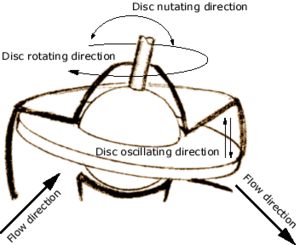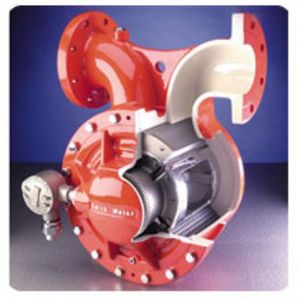Positive Displacement PD Meters
Positive Displacement PD Meter is a type of flow meter that requires fluid to mechanically displace components in the meter in order for flow measurement. Positive displacement (PD) flow meters measure the volumetric flow rate of a moving fluid or gas by dividing the media into fixed, metered volumes . A basic analogy would be holding a bucket below a tap, filling it to a set level, then quickly replacing it with another bucket and timing the rate at which the buckets are filled . With appropriate pressure and temperature compensation, the mass flow rate can be accurately determined.
These devices consist of a chamber that obstructs the media flow and a rotating or reciprocating mechanism that allows the passage of fixed-volume amounts. The number of parcels that pass through the chamber determines the media volume. The rate of revolution or reciprocation determines the flow rate. There are two basic types of positive displacement flow meters. Sensor-only systems or transducers are switch-like devices that provide electronic outputs for processors, Controllers, or data acquisition systems. Complete sensor systems provide additional capabilities such as an integral display and/or user interface. For both types of positive displacement flow meters, performance specifications include the minimum and maximum measurable flow rate, operating pressure, temperature range, maximum allowable material viscosity, connection size, and percent accuracy . Suppliers indicate whether devices are designed to measure fluid or gas.
Advantages and Considerations
Positive displacement flow meters are very accurate and have high turndown. They can be used in very viscous, dirty and corrosive fluids and essentially require no straight runs of pipe for fluid flow stream conditioning though pressure drop can be an issue. They are widely used in custody transfer of oils and liquid fluids and are applied on residential home natural gas and water metering. A diaphragm meter, with which most homes are equipped, is an example of a positive displacement meter. This type of meter is appealing in certain custody transfer flow applications where it is critical that the metering be functional in order for any flow to take place.
PD flow meters, with internal wiping seals, produce the highest differential pressure of all the flow meter types. Meters that rely on a liquid seal create a relatively low pressure drop.Positive-displacement (PD) meters can measure both liquids and gases. Like turbine meters, PD flow meters work best with clean, non-corrosive, and non-erosive liquids and gases, although some models will tolerate some impurities. Because of their high accuracy, PD meters are widely used at residences to measure the amount of gas or water used. Commercial or industrial applications include: chemical injection, fuel measurement, precision test stands, high pressure, hydraulic testing and many other precision applications. Some designs require that only lubricating fluid be measured, because the rotors are exposed to the fluid. PD meters differ from turbine meters in that they handle medium and high-viscosity liquids well. For this reason, they are often used to measure the flow of hydraulic fluids. PD meters above 10 in. tend to be heavy, large, because of the materials of use and internal parts. PD meters require very little upstream piping, and can easily handle low flows. One good thing about PD meters is that for high viscosity application, special clearance are provided, to reduce differential pressure and shearing force. So Meters which are worn out in thin liquid and are giving more error can be utilized in thick liquid having more viscosity. They will perform well and will give accurate reading.
- Water meter
- Oil meter
- Gas meter
- Flow measurement
- Displacement volumetric meter

